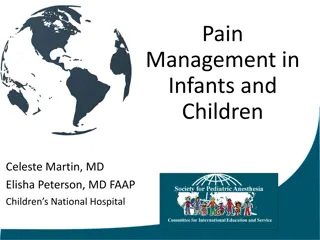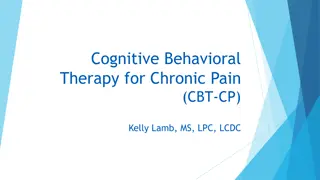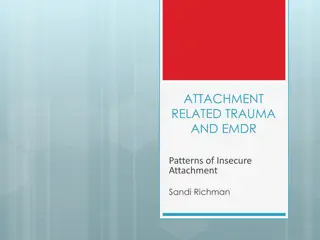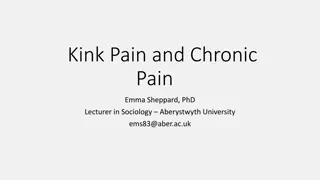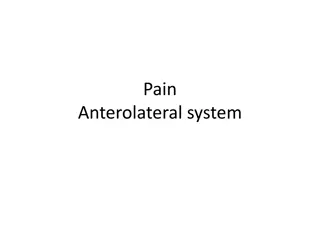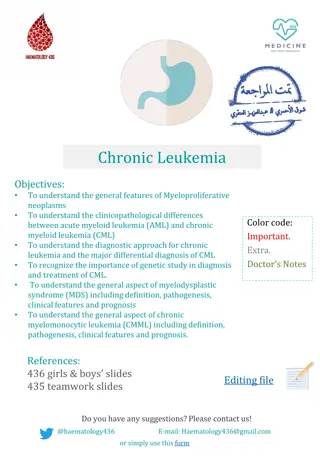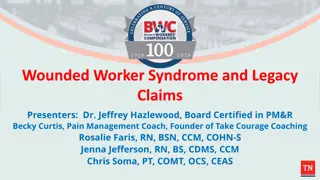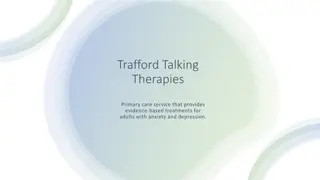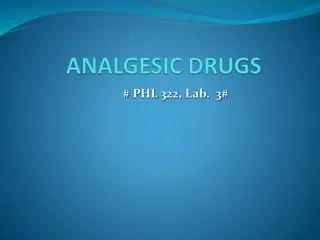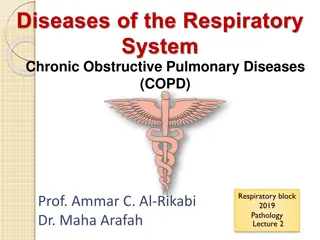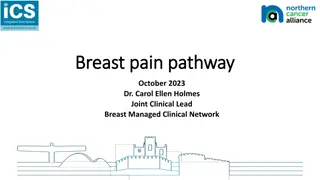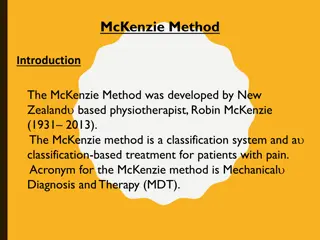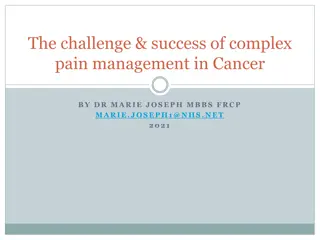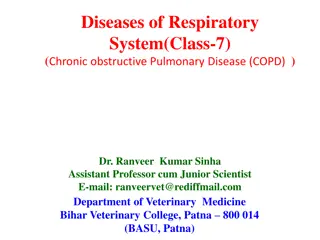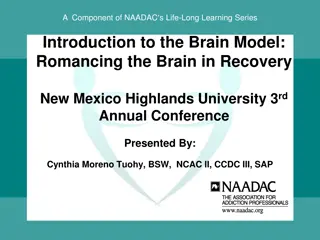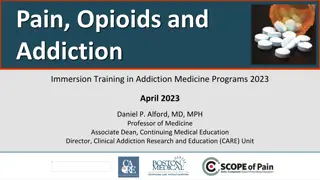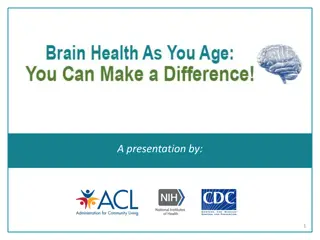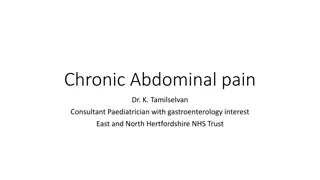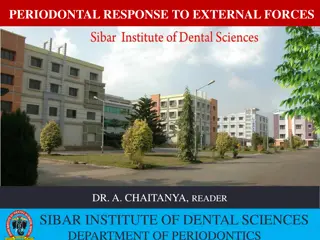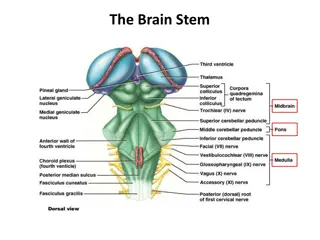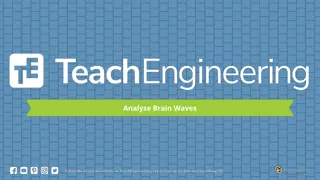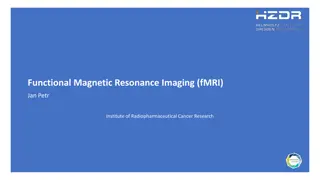Understanding the Brain: Key Insights on Chronic Pain and EMDR Therapy
Persistent pain is often a symptom originating from the brain, not the body tissues. EMDR therapy can help reprocess maladaptive memory networks linked to chronic pain, addressing root causes including adverse childhood experiences. The AIP model emphasizes early-life factors in shaping chronic pain, challenging traditional views on pain perception. Lorimer Moseley's research highlights the brain's role in producing pain signals. Recognizing pain as a brain-driven response can lead to more effective treatment strategies and a deeper understanding of pain management.
Download Presentation

Please find below an Image/Link to download the presentation.
The content on the website is provided AS IS for your information and personal use only. It may not be sold, licensed, or shared on other websites without obtaining consent from the author. Download presentation by click this link. If you encounter any issues during the download, it is possible that the publisher has removed the file from their server.
E N D
Presentation Transcript
SAFE EMDR Therapy for Chronic Pain Tyler Orr, LPC/MHSP
Key Points Persistent pain is a symptom, not the problem. Pain comes from the brain, not the tissue of the body. Pain s purpose is to protect the body and facilitate healing. Pain is a matter of perception how a person s nervous system perceives what is happening and sometimes the perception can be incorrect, causing pain to persist where no tissue damage is present. Pain can be stored in maladaptive memory networks along with other images, beliefs, thoughts, emotions, and sensations, which can result in somatic symptoms. Pain can be reprocessed just like other images, beliefs, thoughts, emotions, and sensations that are stored in maladaptive memory networks by getting to the root. Adverse childhood experiences are frequently at the root of persistent pain. Adverse childhood experiences strongly influence and prime how a person s system responds to stressors, how he or she perceives safety and attachment, and the character traits that become overdeveloped as The Answer to the stressors.
Chronic Pain and the AIP Model The AIP model states that most pathologies are derived from earlier life experiences that are maladaptively stored in the nervous system. As EMDR therapists, we see things like panic attacks, depression, and intrusive thoughts as symptoms not the problem. The same is true for chronic pain.
If you catch a cold, its likely you won t mistake your runny nose as the source of your ailment. Rather, you understand that the runny nose is a symptom and indicator of something deeper that is going on in your system. It s easy to see this with a cold, but we are conditioned to believe very differently about pain. The current medical model holds firmly that pain is the result of tissue damage in the body, but this is often not the case.
Lorimer Moseley Pain is produced by the brain after a person s [nervous system] has been activated and concluded the body is in danger and action is required. YouTube TED Talk: TEDxAdelaide - Lorimer Moseley - Why Things Hurt
Pain does not come from the body. It comes from the brain. When the brain detects that an area of the body needs special attention, a neural network is activated between the brain and body where the danger message is brought to awareness and localized to the pertinent part of the body. This uncomfortable sensation motivates actions that prevent further damage and encourage healing.
Sometimes the brain gets it wrong. It can mistakenly localize pain to areas that need no special attention. All pain is a matter of perception how the person s nervous system perceives what is happening. Sometimes the perception can be incorrect, causing pain to persist beyond the necessary time for damaged tissue to heal, and/or exist even in the absence of detectable damage.
Those with unresolved trauma and early attachment disruptions are especially susceptible to this type of pain. When this type of pain manifests it can be treated similarly to other maladaptive emotional or behavioral symptoms like depression and hypervigilance, which puts pain within the EMDR therapist s scope of practice.
The AIP model also states that memories are stored in associative memory networks, which are the basis of our attitudes, beliefs, behaviors, and perceptions (aka The Answer ). If a client is unable to adaptively process an earlier life experience that was disturbing, a network of neural pathways from the brain to the body is formed that contains the images, beliefs, thoughts, emotions, and sensations of the traumatic event.
Just like symptoms such as anxiety or depression can become associated with a memory network, so can pain. Once these neural pathways are formed, they may be stimulated by present-day events that are similar to the previous event. Over time the neural network that contains the pain pathway can be strengthened, sensitized, and wired into the circuitry of the client s nervous system. Pain then becomes part of the client s Answer .
Clients who seek out mental health professionals typically do so because doctors have found no medical reason for their pain, and the numerous treatments that the client sought did not help even though they should have. These clients often meet the DSM-5 criteria for Somatic Symptom Disorder (SSD). Disproportionate and persistent thoughts about the seriousness of one s symptoms. Persistently high level of anxiety about health or symptoms. Excessive time and energy devoted to these symptoms or health concerns.
Your clients back pain may not be rooted in the tissue of his or her back after all. Rather, it may be rooted in earlier experiences in the client s life that are presently stored in his or her system.
Theorizing that pain is always due to damage in the body is like saying that your nose must be defective if it is running. Just like a runny nose is a symptom of a virus in the system, chronic pain is often a symptom of adverse life experiences that were maladaptively or incompletely processed. The good news is you can use EMDR to treat chronic pain just like you would anything else you work with by getting to the root.
Script: Finding the TargetsGetting to the Root of Chronic Pain Presenting Issue:The client s experience of pain, including sensation, thoughts, and emotions. How would you describe the pain in terms of how it feels physically? Use descriptive words like hot, sharp, jagged, etc. to directly connect the client to the sensation.
Worst Part: When you notice the sensation of pain and you think about how it impacts your life, what s the worst part of it now? Look for an emotional connection that goes beyond It hurts. Example: I m afraid I ll never get better.
Present Trigger #1: Please tell me a recent time that would be an example of this. Present Trigger #2: Can you give me an example of how this shows up in your life socially? Present Trigger #3: Can you give me an example of how this shows up in your intimate relationships? Present Trigger #4: Can you give me an example of how this shows up in your life at work?
SUD How disturbing is it right now, on a scale of 0-10 with 0 being no disturbance and 10 being the highest disturbance you can imagine? Disturbance here is different than the typical What s your pain level out of 10? The SUD is a way of gauging the client s full experience of pain mental and emotional upset surrounding the pain in addition to the level of pain that is experienced in the body.
Negative Cognition: When you bring up this disturbance, what is the negative belief you have about yourself now? Examples: I m powerless. Earlier Memories: "When you bring up the worst part of the pain and the words ______(NC) what is an earlier time you can remember experiencing something similar? How about an earlier time?" Clinician keeps asking as long as the client keeps answering. Earliest is the touchstone .
Future Desired State Now I would like us to look at each present trigger and decide how you would like to react, behave, or feel in that situation when or if it happens in the future. As you think about the present trigger of_______, how would you like to be able to react, feel or behave when that or something similar happens in the near future?
Pain and The Answer Many studies show that adverse childhood experiences can lead to an overly sensitized nervous system, which can lead to chronic pain later in life. These childhood stressors strongly influence and prime how a person s system responds to stress, how he or she perceives safety and attachment, and the character traits that become overdeveloped as The Answer to these stressors.
Two common factors of those with chronic pain: 1. Childhood abuse and/or neglect. 2. Overdeveloped traits of guilt, self-criticism, low self-esteem, high expectations for self, extreme responsibility for others, self- sacrifice, hypervigilance, and feelings of powerlessness to change current situations.
Even mild degrees of dysregulation rooted in childhood experiences can be enough to trigger symptoms. Regardless of the level of childhood stress, it s important to explore: How these previous experiences are currently being stored in the client s system How The Answer to these previous stressors are getting in the client s way Which past experiences are at the root of the client s pain
These character traits are commonly seen in people with chronic pain: Low self-esteem Perfectionism High expectations of self Wanting to be good or liked Guilt Dependence on others Conscientiousness Being hard on yourself Overly responsible Taking on responsibility of others Excessive worry Indecisiveness Powerlessness/helplessne ss Rule following Difficulty letting go Cautious, shy, or reserved Represses thoughts and feelings Lack of safety/hypervigilance Harboring rage or resentment Not standing up for yourself
These Answer character types are commonly seen in people with chronic pain: The Rock The Invisible One The Emotional One The Nice/Non-Threatening One The Doer The Hero
Common SSD Complaints and Conditions Chronic Pain Syndromes: Tension headaches Migraines Back pain Neck pain Foot pain Whiplash Fibromyalgia Temporomandibular joint (TMJ) syndrome Chronic abdominal and pelvic pain Chronic tendonitis Vulvodynia Sciatic pain syndrome Repetitive stress injury Myofascial pain syndrome
Autonomic Nervous System Related Disorders Irritable bowel syndrome Interstitial cystitis (irritable bladder syndrome) Postural orthostatic tachycardia syndrome (POTS) Inappropriate sinus tachycardia Chronic regional pain syndrome (CRPS) Functional dyspepsia or gastroesophageal reflux disease (GERD)
Other Syndromes: Insomnia Chronic fatigue syndrome Paresthesias (numbness, tingling, burning) Tinnitus Dizziness Spasmodic dysphonia and/or globus hystericus Chronic hives



